Alumni Interview: Alberto Villarreal on creativity and staying relevant
In design, one should always strive towards becoming a generalist, not a specialist. That's according to Alberto Villarreal.
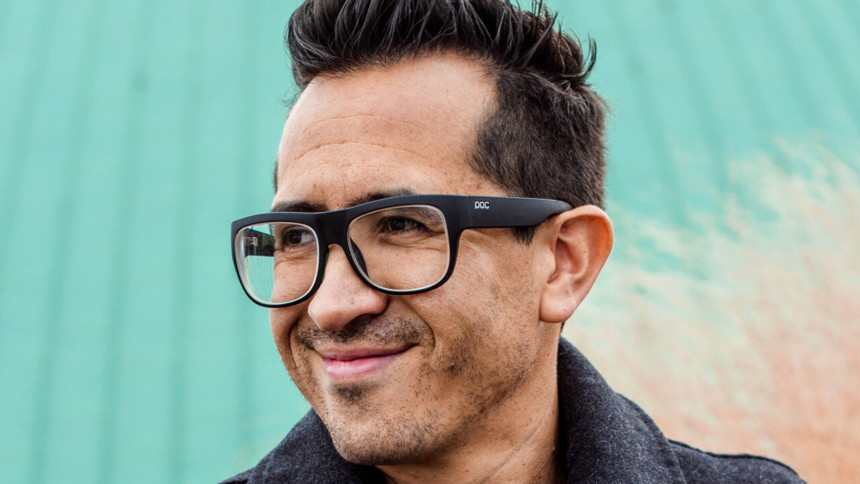
Judging by his own career, the empirical evidence suggests switching lanes is instrumental to fueling and fostering creative growth. His CV, at a glance, tells that very story.
Alberto has displayed an almost stubborn curiosity, showcased by trying very different things and switching industries, seemingly while at the peak of his powers. Having concluded a massive project in Mexico City with his own design studio, where he oversaw the interior design of movie theatres at the National Mexican Film Institute, he packed up shop in 2013 and joined Google. Before soon, he was spearheading the design end of the tech giant's first venture into the global mobile phone market.
I never wanted to limit myself to one type of product or a specific industry
Alberto Villarreal
"I think it makes you a better designer to work on a variety of projects. Actually, the more you know about a certain type of product the more you start thinking about how to not do things. Then you might start to limit yourself creatively", says Alberto Villarreal.
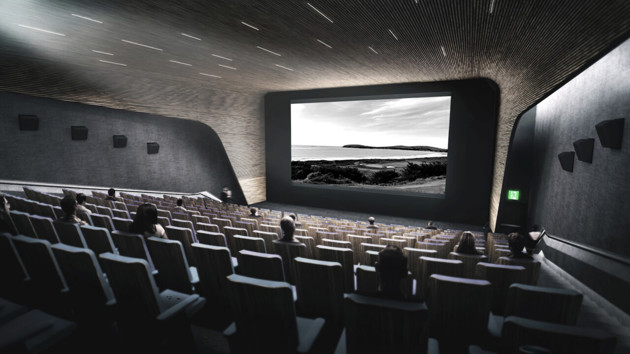
One of the movie theaters at Cineteca Nacional designed by Alberto Villarreal.
ImageCourtesy of Alberto VillarrealThe Cineteca Nacional project in Mexico City, a huge government contract, is a telling example. Alberto and his friend and colleague, architect Michel Rojkind, were given the responsibility of reinventing a unique cultural space at the heart of Mexican cinema. A daunting prospect. One that any young designer may have hesitated to take on. On top of that, designing movie theatres was quite the stretch for Alberto at the time. Being responsible for the interior design he found himself, for the first time in his career, consulting with experts in acoustics and lighting.
"It was truly fascinating and educational. We got the opportunity to remodel some of the old theatres and even design a couple of new ones, eleven theatres in total. And it was super-satisfactory to then see people going to the complex for movie festivals, witnessing it becoming an actual part of cultural life in Mexico City."
Finding your creative fuel in design
Switching gears to stay creatively fresh in your career is not a revolutionary concept by any means. In fact, these days it is probably one of the standard tips given by career coaches everywhere. However, in a job where the innovative process carries such defining significance as it does in design, the creative muscle needs to be continually flexed.
So, what does the creative process in industrial design entail? What are the inspirations, methods and mechanisms that allow the creative juices to flow? Such motivations may differ significantly from one designer to another. In Alberto Villarreal's case, the front end of a product's journey is where it all happens.
At that stage, when it's just you and the form, that's really a beautiful process
Alberto Villarreal
"For me, that's the heavily creative phase where you have to come up with a lot of concepts through sketching, mock-ups, prototyping and making models"
The fuel for such creative sessions has to come from somewhere. No designer is an empty vessel where ingenious ideas are born out of nothing. Getting stimulated and drawing inspiration from different sources is important, whether it is taught in a classroom or not. It's also a highly individual process. A lot of the time it is even an unconscious one.
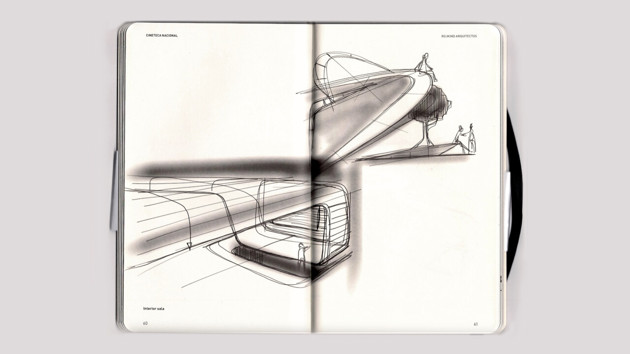
A sketch of the interior and exterior of the Cineteca Nacional project at the National Mexican Film Institute.
ImageCourtesy of Alberto Villarreal"Most designers will probably say that they're inspired by people. And that's of course true in my case as well. But I also tend to look towards other industries such as architecture, fashion and furniture. For example, you might be browsing a magazine, another time you'll be walking around a store absorbing all kinds of cultural information visually. I also used to paint a lot, I'm really passionate about music and I'm curious to learn more about sculptures. All these things stay in my brain and when I'm sketching the influences mix together and combine to inspire me."
"Other times, of course, it will be more conscious. Perhaps tied to an already defined project. You might be trying to understand and analyze certain cultural trends and translate that into a specific product where you aim to appeal to a certain market or maybe a specific season of the year."
"Designers are experts in beauty"
Alberto Villarreal has been quoted saying that "designers are experts in beauty". Some industrial designers, perhaps leaning more towards function and usability, may not agree. In his opinion, these parts are not mutually exclusive.
I think it's true that we're experts in beauty, especially so when working in an environment with multiple experts from other disciplines
Alberto Villarreal
"For me, when I'm dealing with professionals in engineering, materials and business, I have to be the expert in beauty."
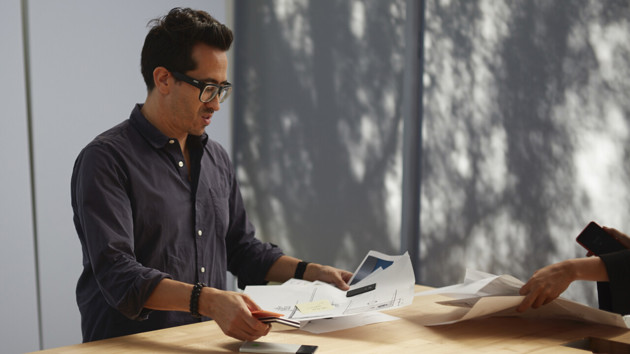
Alberto Villarreal during a session for the Google Pixel 2 Phone.
ImageCourtesy of Alberto VillarrealTo Alberto, all humans bear some responsibility for what we put into the world. For a leading designer at Google where products are produced in large quantities, that responsibility multiplies exponentially.
The cultural revolution at Google
At Google, the main challenge for Alberto has not only been the grand task of suddenly designing for a multitude of users. It has been to give birth to a new culture within the company. From one day to the next, his team has been part of ushering in a new era, creating and producing hardware products within the world's biggest software corporation. For the Pixel Phone series and the Pixelbook (the Google laptop), where Alberto has been the Creative Lead designer, that also meant crafting a new design language, from scratch.

The design team at Google during the development of the Pixelbook laptop.
ImageCourtesy of Alberto VillarrealDeveloping a hardware product in a company that has built its brand around software development presents its challenges, of course.
Alberto Villarreal
"But it's been truly rewarding to create a new culture here, being part of that journey has been really fascinating".
"For both products, I've been heavily involved in developing the design language. If you look at the Pixelbook from ten meters away, for example, you immediately know what product it is. That pretty much tells me everything. That's the most important part of the design language for me. The Pixel 2 Phone is another example with its black and white aesthetics that became quite iconic. That one you could also spot from far away. People even started calling it 'the panda' after a while".
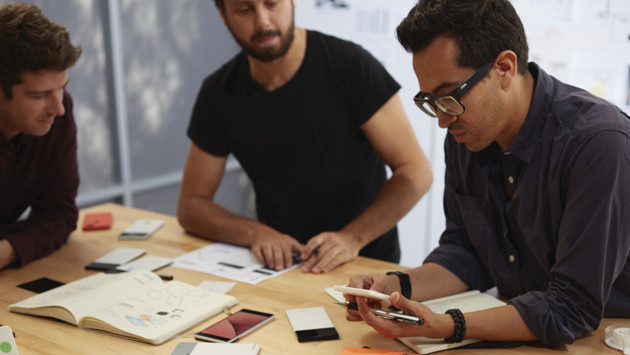
Alberto Villarreal and his team explore different design trajectories working on the Google Pixel Phone series.
ImageCourtesy of Alberto VillarrealPutting together a smartphone that is able to compete in today's flooded marketplace requires more than a distinctive exterior design language. Naturally, the Pixel Phone team at Google also involves experts developing software and AI, as well as the camera. All these capabilities needed to converge into one tangible product.
"Of course, with such complex products it's sometimes a bit of a negotiation among different teams with experts from different disciplines, but ultimately we're all designing for the user and that sentiment resonates among us all."
Being ingrained with the DNA from UID
Last year, Alberto returned to his alma mater as keynote speaker for the UID19 Design Talks & Degree Show. Although he hadn't been back since graduating from the Master's Programme in Transportation Design in 2002, the school premises soon felt strangely familiar despite 17 years having passed.
"I think it's because you spend so much time at school when you're here as a student. That also means you end up developing really strong bonds with your fellow students. It all makes the school feel like an actual home".
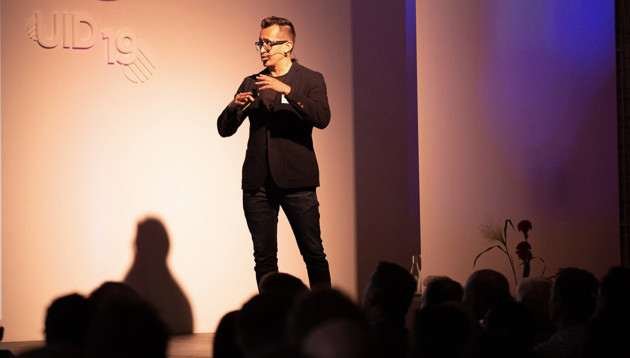
Alberto Villarreal during his keynote adress at the UID19 Design Talks & Degree Show.
ImagePeder FälleforsAt UID, everybody's talking about design all the time, inspiring each other
Alberto Villarreal
"While you're developing your own projects, you're learning so much from the other students, exchanging ideas. It's intense and it's very passionate. It's such a unique educational environment. Working so closely with the industry on projects, it also really felt like a design office. Those two years were very important for me and my development, and they still are."
Alberto Villarreal is an avid long-distance runner, as his well-stocked Instagram feed will tell you. Competing in multiple races each year, he approaches his running with the same meticulous rigour as he does a design project. Every year he sets himself detailed goals in order to evolve as an athlete. One assumes he will continue to keep pushing himself in a similar way in design before he reaches the finish line of a colourful career.